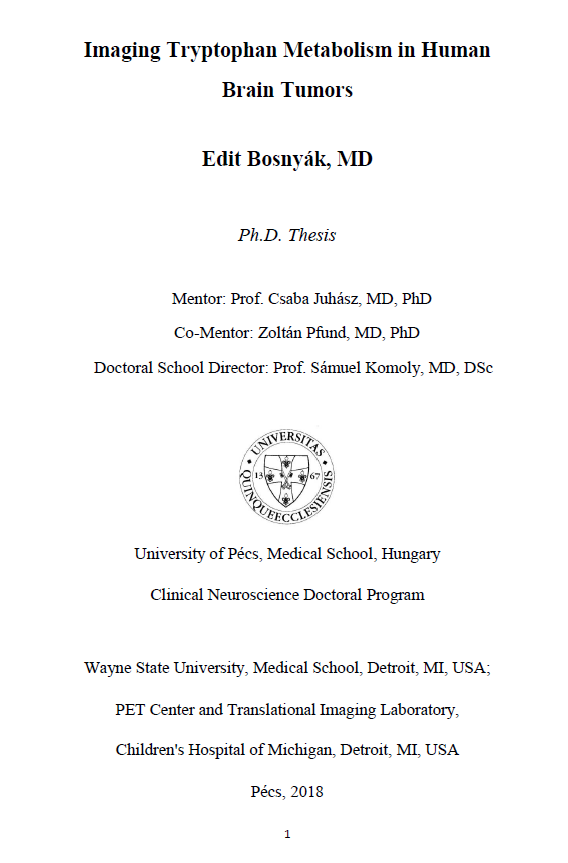Imaging Tryptophan Metabolism in Human Brain Tumors
Abstract
Brain tumors are relatively rare in adults but represent the most common solid tumors in children. In all ages, brain tumors carry a significant mortality, and, therefore, are considered to be a major health care issue. The majority of newly-diagnosed brain masses are metastatic tumors, while the rest represent a variety of primary central nervous system (CNS) tumors. There are a few known risk factors associated with brain tumors, such as ionizing radiation and genetic predisposition. Genetic susceptibility for brain tumors may exist, however, the majority of brain tumors are sporadic. On the other hand, autoimmune conditions and allergies are inversely correlated with glioma risk. The most common primary brain tumor is meningioma, followed by glioblastoma. Based on Surveillance Epidemiology and End Results Program, 2016, in the adult population above age 40 years, the average annual age-adjusted incidence rate of primary CNS tumors is 40.10/100,000. The 5-year relative survival of primary malignant CNS tumors between 1995-2013 was 34.7% (higher in females), but it was modified significantly by age, histology and clinical behavior, while in non-malignant CNS tumors, 5-year survival was 90.4% in US.

